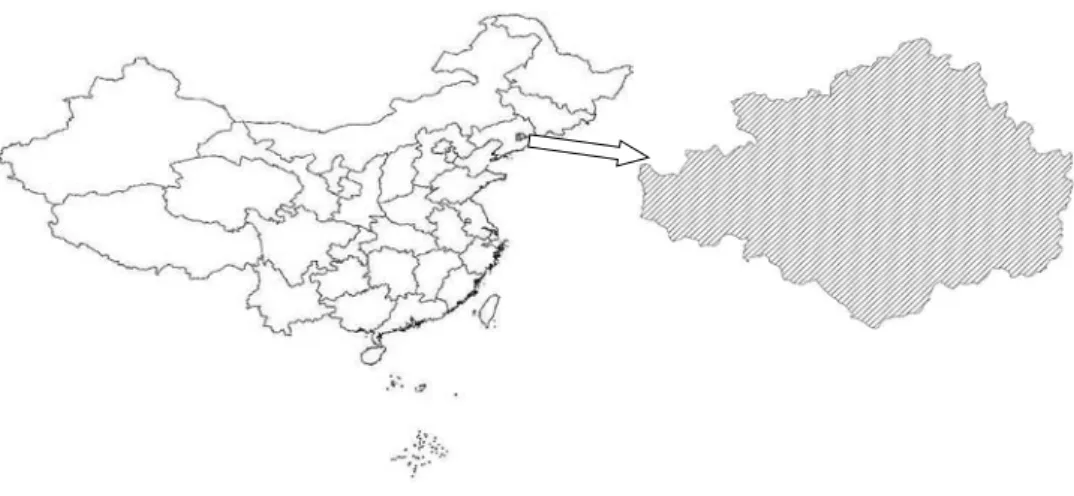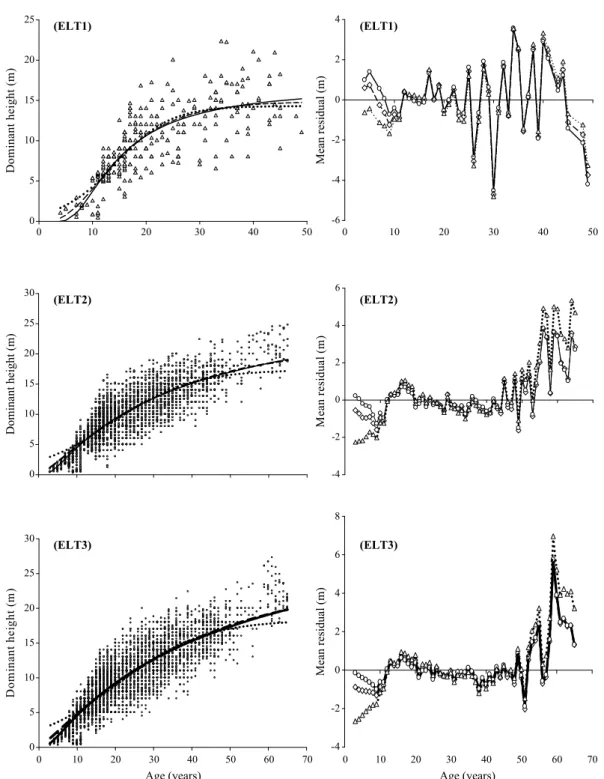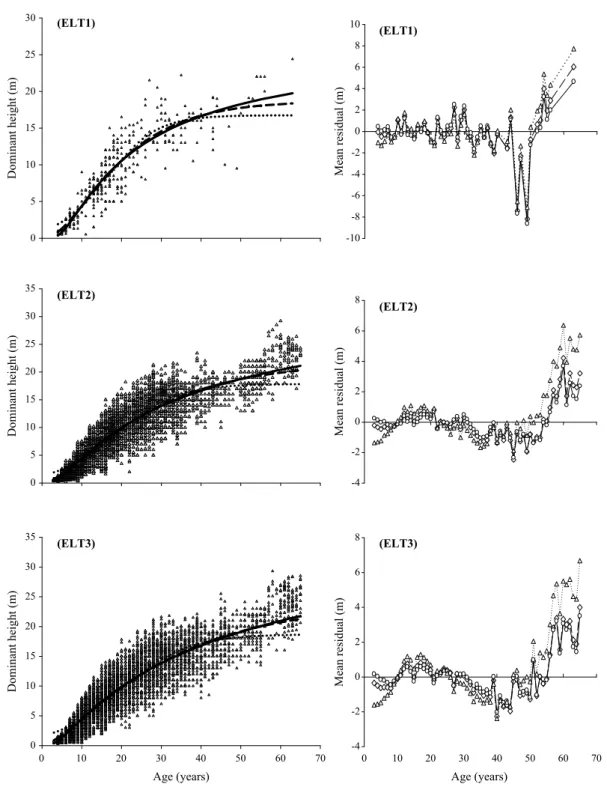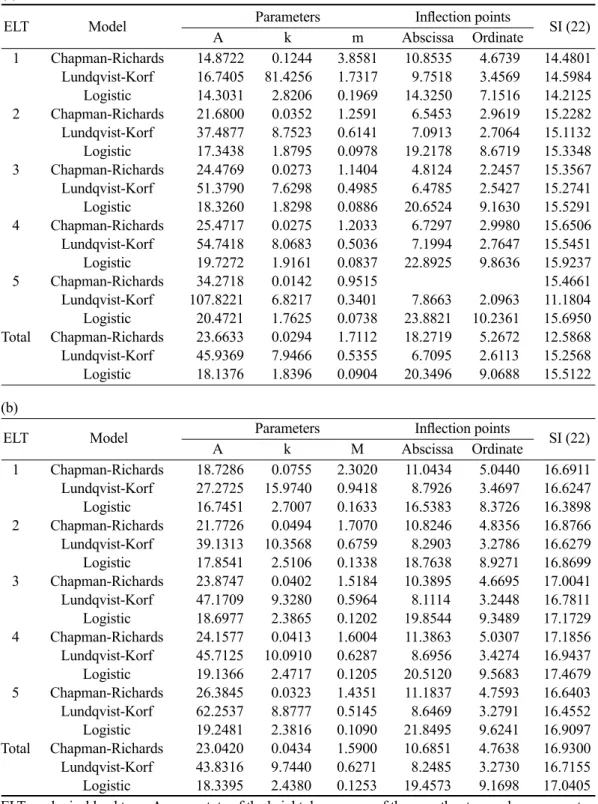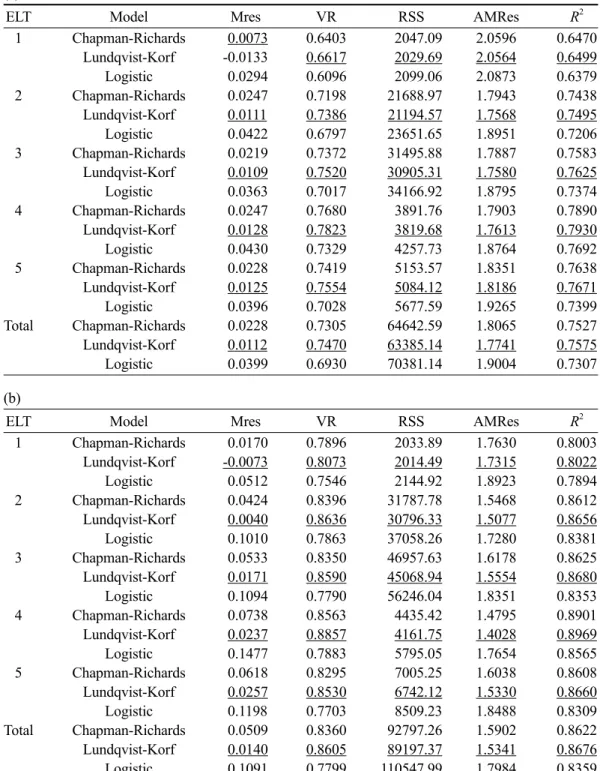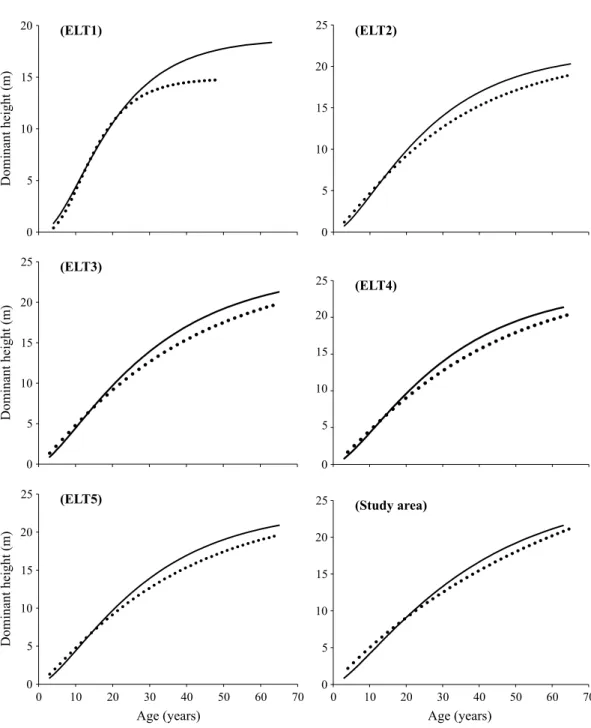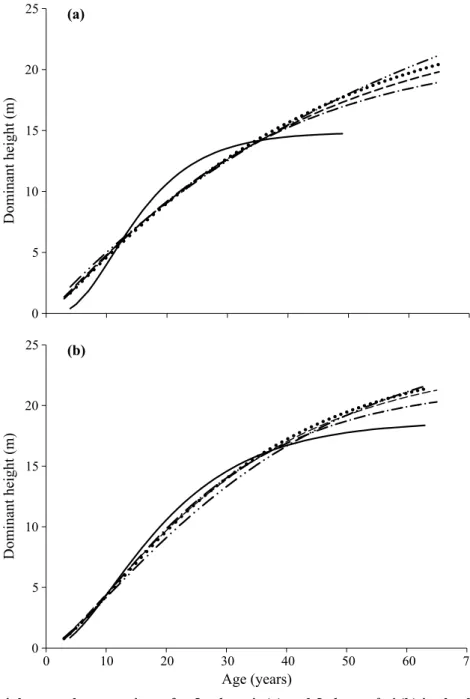Modeling and Comparing Height Growth of Larch Plantations in Different Land Types in Eastern Liaoning Province, Northeast China
Hui-Yan Gu
1,2)【 Summary】
This study compared the growth of 2 larch plantations located in different land types in east- ern Liaoning Province, China based on forest inventory data and mathematical models. Results demonstrated that the Chapman-Richards function was the most suitable model for the study site.
The ecological land type (ELT) classification system is an effective tool for larch plantation zoning.
Gentle slopes, including ELT2 and ELT3, were the best sites for larch plantations. Larix kaempferi showed greater growth than did L. olgensis. This research also indicated that species selection, such as L. kaempferi, was a key for forest plantation establishment and future stand development.
Thus, species and site selections are key components for consideration in forest management prac- tices.
Key words: Chapman-Richards function, forest inventory data, Larix kaempferi, Larix olgensis, mathematical models.
Gu HY. 2013. Modeling and comparing height growth of larch plantations in different land types in Eastern Liaoning Province, Northeast China. Taiwan J For Sci 28(2):67-81.
1)School of Forestry, Northeast Forestry Univ., Harbin 150040, China. 東北林業大學林學院,150040 黑龍江省哈爾濱市和興路26號。
2)Corresponding author, e-mail:ghuiyan@nefu.edu.cn 通訊作者。
Received September 2012, Accepted May 2013. 2012年9月送審 2013年5月通過。
研究報告
中國遼寧東部不同土地類型落葉松人工林高生長比較
